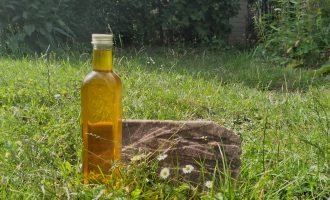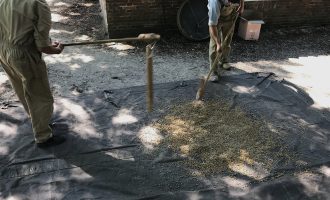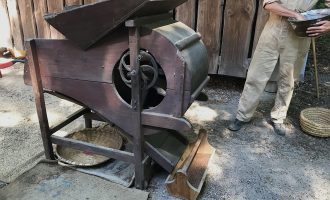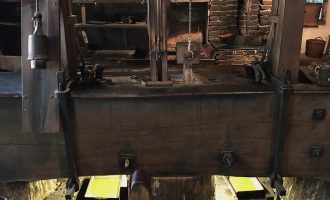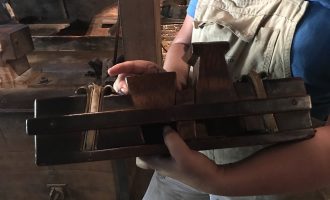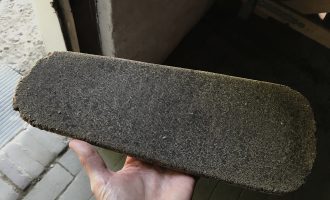milling linseed oil at the netherlands open air museum
The ‘rosoliemolen’ at the Netherlands Open Air museum was originally a horse-driven oil mill (‘ros’ = horse, ‘olie’= oil, ‘molen’= mill). Nowadays the millstone is driven by a motorised mechanism and operated by trained volunteers, following the traditional extraction process.
On August 13 2022, a group of Linen Stewards participated in the process of pressing linseed oil from the seed gathered from their 2021 flax harvest. The seed pods had been removed from the flax stems by rippling, a first step of working the flax. To obtain the seed for pressing, the seed pods were first threshed – hit on the stone floor with threshing flails – to break them open. The husks were then separated from the seed using a winnowing mill. Rosoliemolen operators Noes Teutelink and Thijs Belgers, also a member of the Shared Stewardship community, oversaw the milling of the seeds and the extraction of the oil. The flax seed, also called linseed, ‘lijnzaad’ in Dutch, is first crushed between two rolling edge-runner stones for just under half an hour. The broken seed, now linseed meal, is then heated to body temperature, around 30 to 40 degrees. This is done over a wood fire in a small stove, the so-called ‘vuister’. Heating the meal makes the oil present more fluid. The warmed meal is placed in two filter bags, which are then hung in the press. A stamping mechanism is used to press the bags flat, the oil flows out and is collected in trays.
Linseed oil has many applications, including as a wood protectant and in paint, putty and soap. It is also the basis for linoleum. The oil is not suitable for frying, as it releases prussic acid gas when burned. After pressing, a dry cake remains, called a ‘lijnkoek’ or press cake, which is often used as animal feed. The rosoliemolen at the Netherlands Open Air museum was originally in use from 1840 to 1921. Its primary purpose was the production of press cakes, or ‘lijnkoek’, for livestock feed, and the linseed oil was in this case a (very useful) byproduct.
Information about the process at the Netherlands Open Air museum rosoliemolen supplied by Thijs Belgers. Photographs of the extraction process courtesy of Linen Steward Heleen Klopper.
-
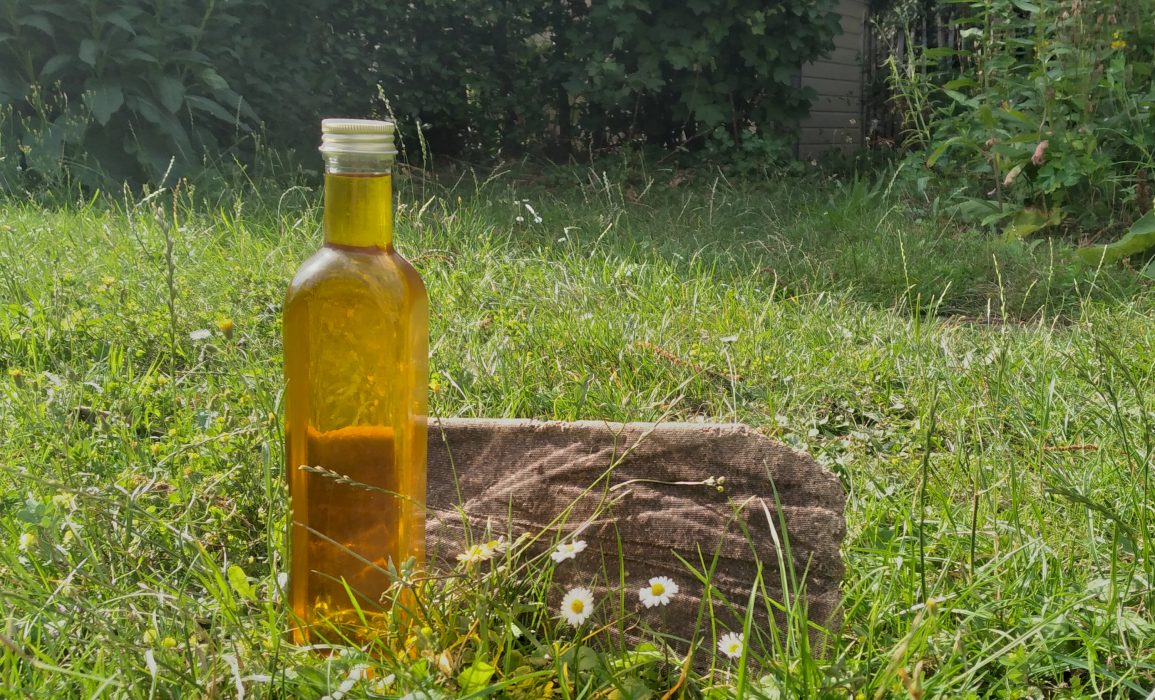
linseed oil and press cake – photo by thijs belgers
-
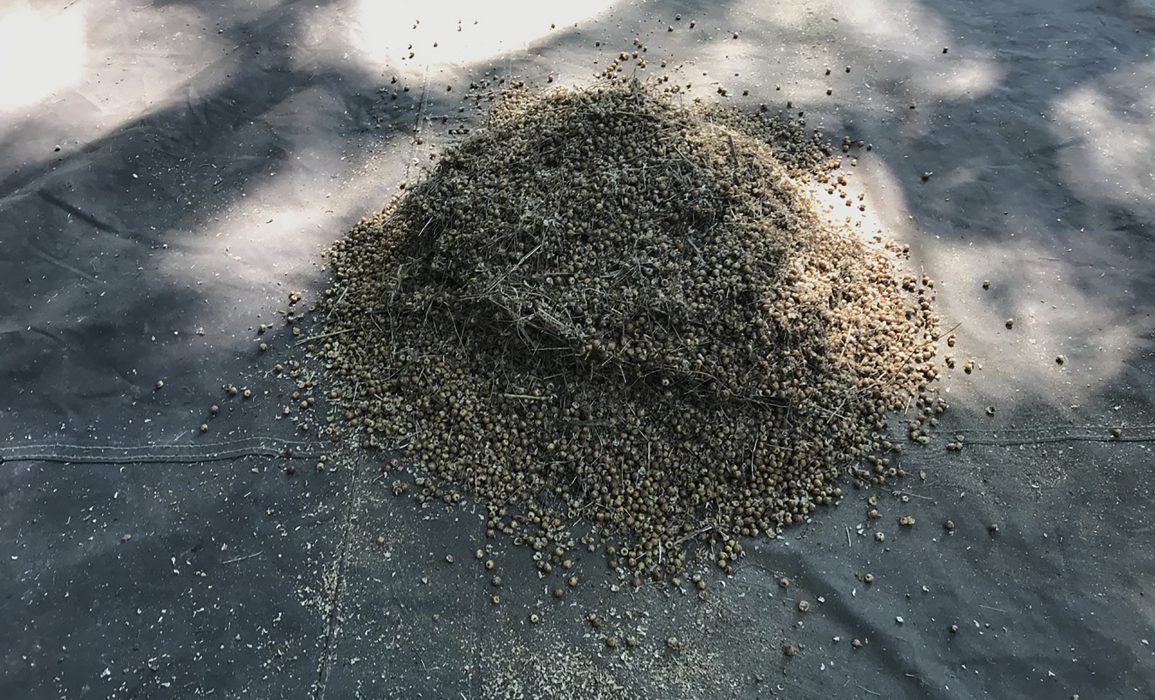
the flax seed pods ready to be threshed
-
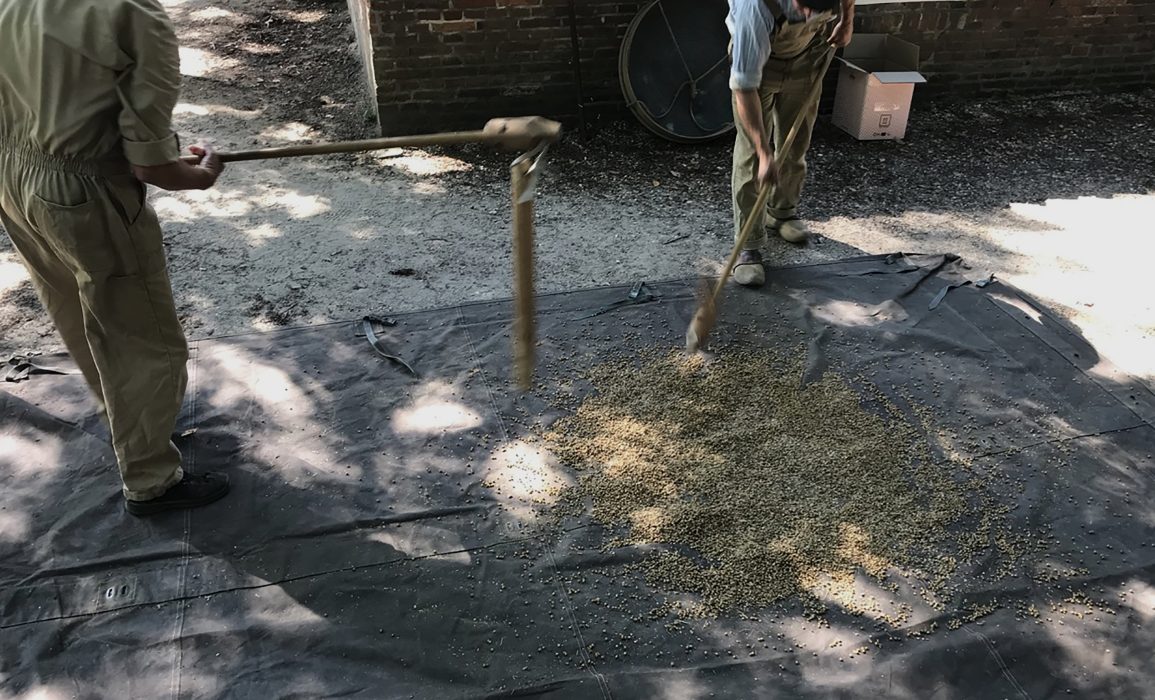
breaking the seed pods with threshing-flails
-
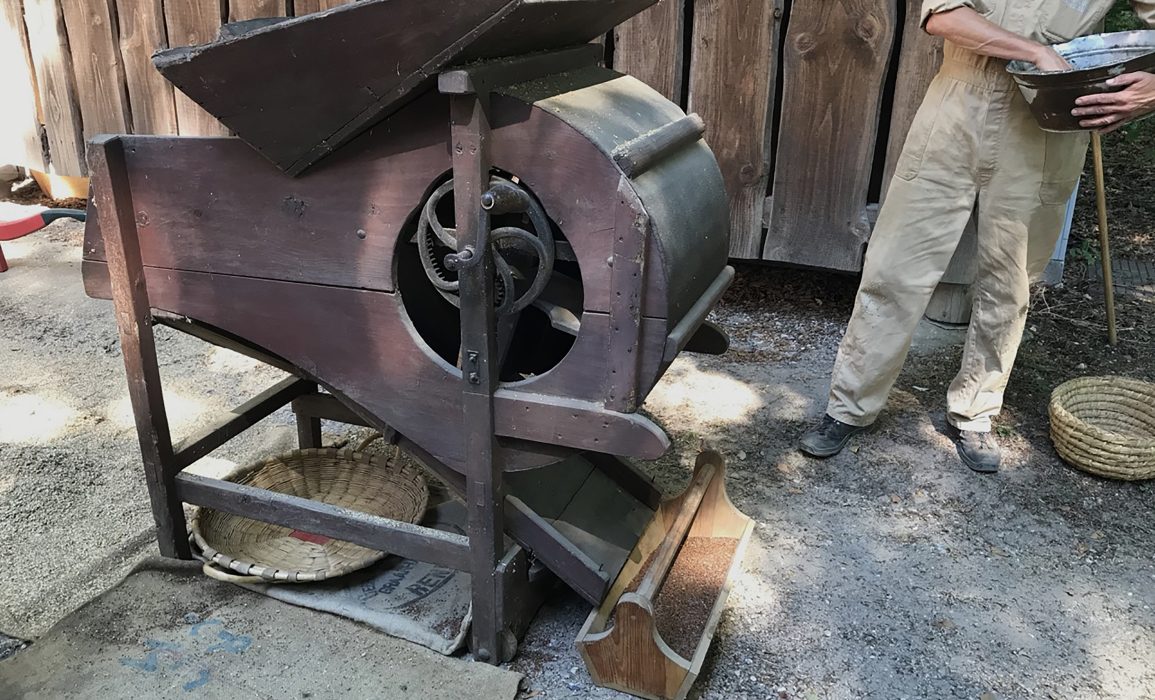
a winnowing mill is used to separate the husks from the seeds
-
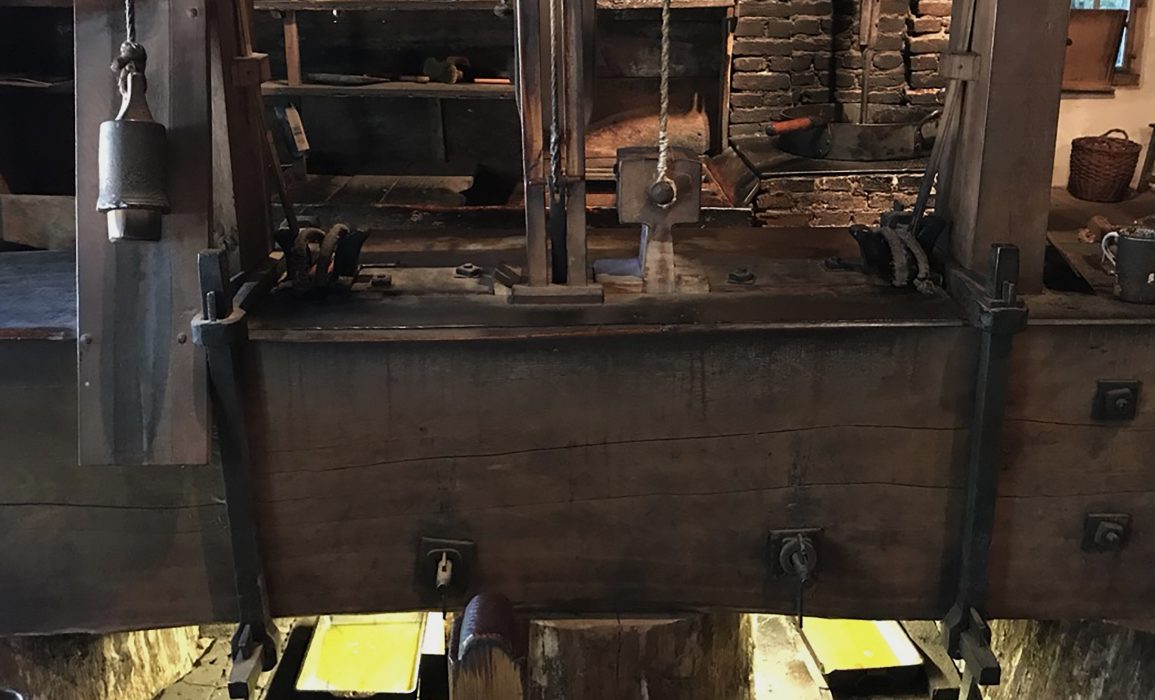
pressing linseed oil from the linseed meal
-
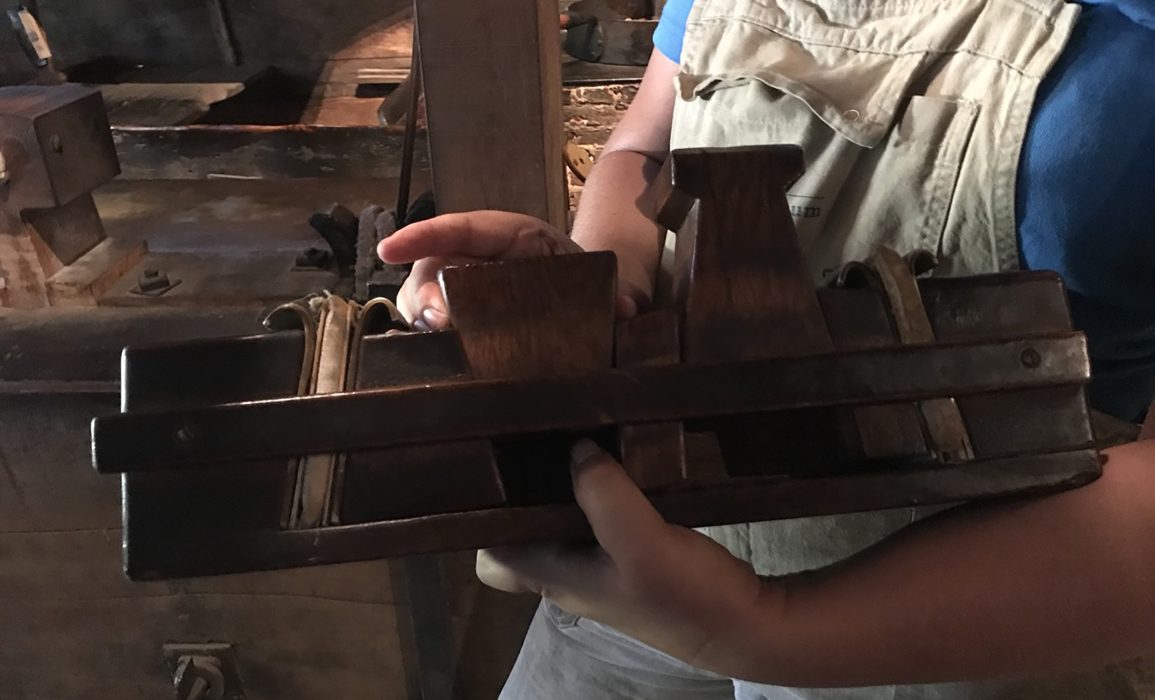
the miller explaining the stamping mechanism
-
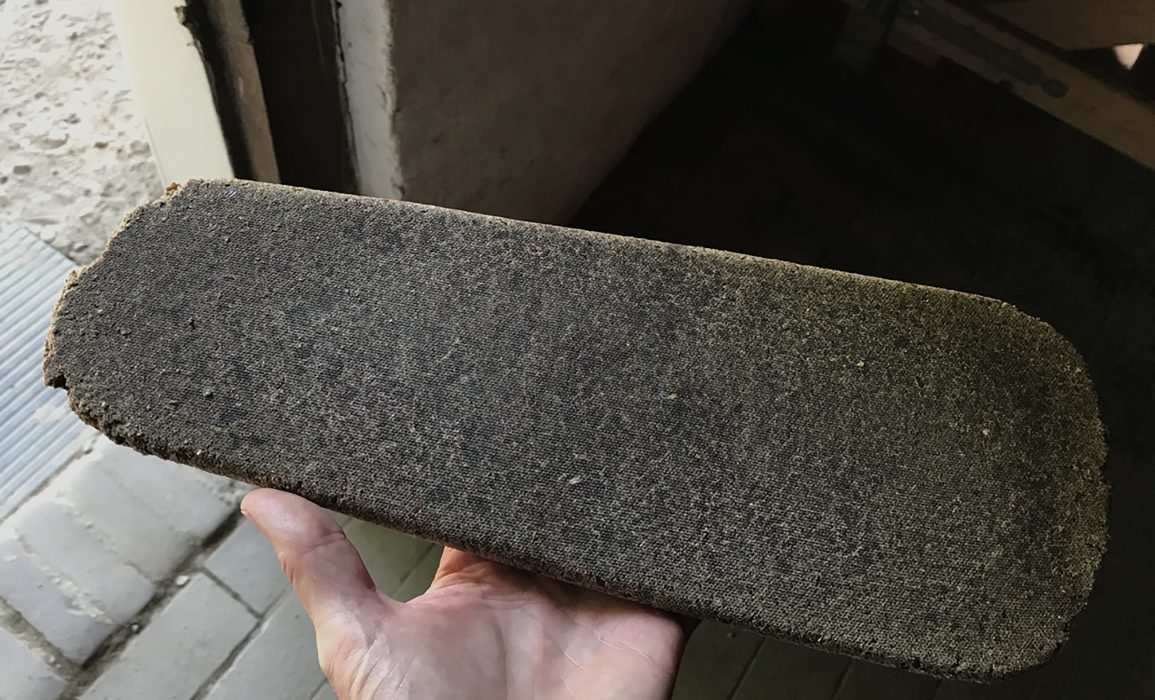
a fresh press cake or lijnkoek
